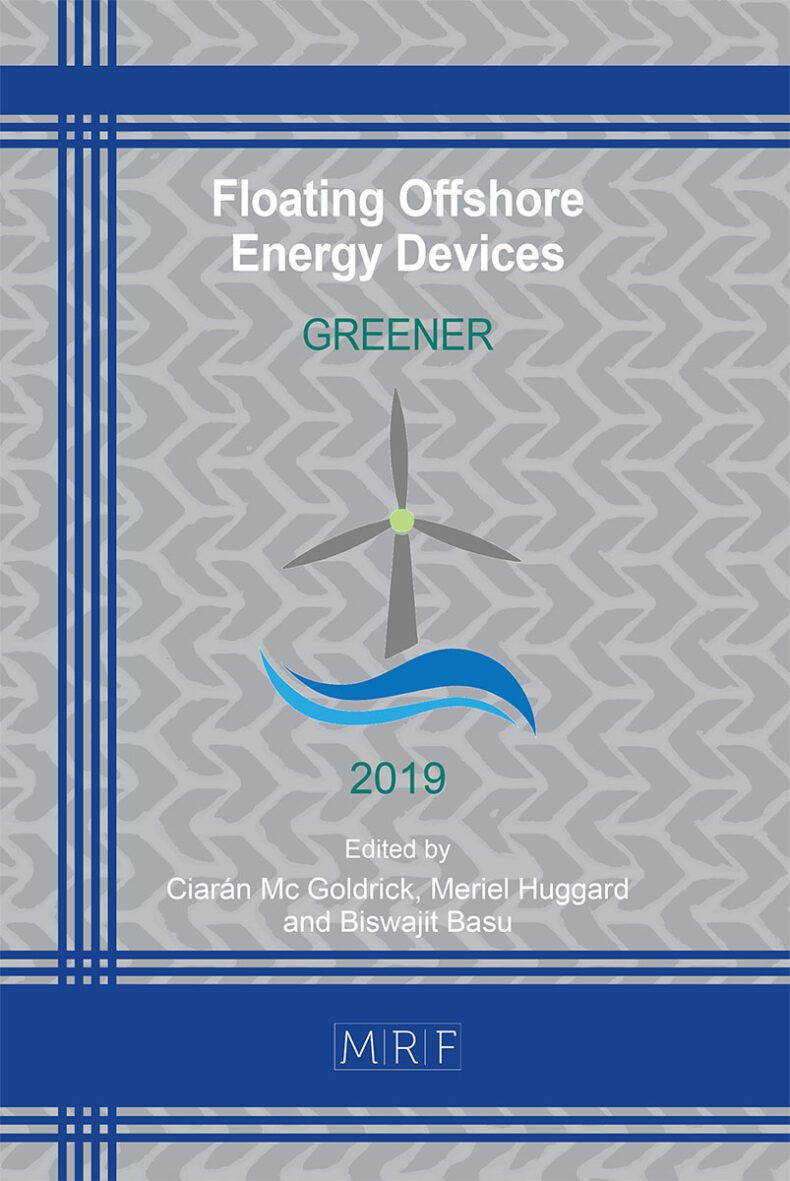Frequency-Domain Identification of Radiation Forces for Floating Wind Turbines by Moment-Matching
Yerai Peña-Sanchez, Nicolás Faedo, John V. Ringwood
download PDFAbstract. The dynamics of a floating structure can be expressed in terms of Cummins’ equation, which is an integro-differential equation of the convolution class. In particular, this convolution operator accounts for radiation forces acting on the structure. Considering that the mere existence of this operator is highly inconvenient due to its excessive computational cost, it is commonly replaced by an approximating parametric model. Recently, the Finite Order Approximation by Moment-Matching (FOAMM) toolbox has been developed within the wave energy literature, allowing for an efficient parameterisation of this radiation force convolution term, in terms of a state-space representation. Unlike other parameterisation strategies, FOAMM is based on an interpolation approach, where the user can select a set of interpolation frequencies where the steady-state response of the obtained parametric representation exactly matches the behaviour of the target system. This paper illustrates the application of FOAMM to a UMaine semi-submersible-like floating structure.
Keywords
Radiation Convolution Term, Offshore Wind Turbine, Frequency-Domain Identification, Moment-Matching
Published online , 8 pages
Copyright © 2022 by the author(s)
Published under license by Materials Research Forum LLC., Millersville PA, USA
Citation: Yerai Peña-Sanchez, Nicolás Faedo, John V. Ringwood, Frequency-Domain Identification of Radiation Forces for Floating Wind Turbines by Moment-Matching, Materials Research Proceedings, Vol. 20, pp 66-73, 2022
DOI: https://doi.org/10.21741/9781644901731-9
The article was published as article 9 of the book Floating Offshore Energy Devices
![]() Content from this work may be used under the terms of the Creative Commons Attribution 3.0 licence. Any further distribution of this work must maintain attribution to the author(s) and the title of the work, journal citation and DOI.
Content from this work may be used under the terms of the Creative Commons Attribution 3.0 licence. Any further distribution of this work must maintain attribution to the author(s) and the title of the work, journal citation and DOI.
References
[1] REN21, “Renewables 2017: Global status report,” REN21 Renewables now, Tech. Rep., 2017.
[2] W. Europe, “Wind in power: 2017 european statistics,” Bruksela: Wind Europe, 2017.
[3] IRENA, “Renewable energy and jobs: Annual review 2019,” International Renewable Energy Agency, Tech. Rep., 2019.
[4] A. N. Robertson, J. M. Jonkman et al., “Loads analysis of several offshore floating wind turbine concepts,” in The Twenty-first International Offshore and Polar Engineering Conference. International Society of Offshore and Polar Engineers, 2011.
[5] Y.-H. Lin, S.-H. Kao, and C.-H. Yang, “Investigation of hydrodynamic forces for floating offshore wind turbines on spar buoys and tension leg platforms with the mooring systems in waves,” Applied Sciences, vol. 9, no. 3, p. 608, 2019. https://doi.org/10.3390/app9030608
[6] W. Cummins, “The impulse response function and ship motions,” DTIC Document, Tech. Rep., 1962.
[7] N. Faedo, Y. Pen˜a-Sanchez, and J. V. Ringwood, “Finite-order hydrodynamic model determination for wave energy applications using moment-matching,” Ocean Engi- neering, vol. 163, pp. 251–263, 2018. https://doi.org/10.1016/j.oceaneng.2018.05.037
[8] A. Astolfi, “Model reduction by moment matching for linear and nonlinear systems,”IEEE Transactions on Automatic Control, vol. 55, no. 10, pp. 2321–2336, 2010. https://doi.org/10.1109/TAC.2010.2046044
[9] N. Faedo, Y. Pen˜a-Sanchez, and J. V. Ringwood, “Passivity preserving moment- based finite-order hydrodynamic model identification for wave energy applications,” in Proceedings of the 3rd International Conference on Renewable Energies Offshore, Lisbon, 2018. https://doi.org/10.1016/j.oceaneng.2018.05.037
[10] Y. Pen˜a-Sanchez, N. Faedo, and J. V. Ringwood, “Moment-based parametric identi- fication of arrays of wave energy converters,” in Submitted to 2019 American Control Conference, Philadelphia, 2019.
[11] Y. Pen˜a-Sanchez, N. Faedo, M. Penalba, G. Giorgi, A. M´erigaud, C. Windt, D. García Violini, L. Wang, and J. V. Ringwood, “Finite-Order hydrodynamic Ap- proximation by Moment-Matching (FOAMM) toolbox for wave energy applications,” in Proceedings of the 13th European Wave and Tidal Energy Conference, EWTEC, Naples, Italy, 2019.
[12] M.J. Coulling, A. J. Goupee, A. N. Robertson, J. M. Jonkman, and H. J. Dagher, “Validation of a fast semi-submersible floating wind turbine numerical model with deepcwind test data,” Journal of Renewable and Sustainable Energy, vol. 5, no. 2, p. 023116, 2013. https://doi.org/10.1063/1.4796197
[13] E. Kristiansen, ˚A. Hjulstad, and O. Egeland, “State-space representation of radiation forces in time-domain vessel models,” Ocean Engineering, vol. 32, no. 17, pp. 2195– 2216, 2005. https://doi.org/10.1016/j.oceaneng.2005.02.009
[14] T. P´erez and T. I. Fossen, “Time-vs. frequency-domain identification of parametric radiation force models for marine structures at zero speed,” Modeling, Identification and Control, vol. 29, no. 1, pp. 1–19, 2008. https://doi.org/10.4173/mic.2008.1.1
[15] T. F. Ogilvie, “Recent progress toward the understanding and prediction of ship motions,” in Proceedings of the 5th ONR Symposium on Naval Hydrodynamics, Bergen, 1964.
[16] J. Falnes, Ocean waves and oscillating systems: linear interactions including wave- energy extraction. Cambridge university press, 2002. https://doi.org/10.1017/CBO9780511754630
[17] J. Jonkman, S. Butterfield, W. Musial, and G. Scott, “Definition of a 5-mw ref- erence wind turbine for offshore system development,” National Renewable Energy Lab.(NREL), Golden, CO (United States), Tech. Rep., 2009. https://doi.org/10.2172/947422































